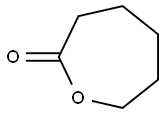Polycaprolactonediol , averageMn~2,000 , 36890-68-3
| Pack Size | Price | Stock | Quantity |
| 5g | RMB30.40 | In Stock |
|
| 25g | RMB104.80 | In Stock |
|
| 100g | RMB364.00 | In Stock |
|
| 500g | RMB1277.60 | In Stock |
|
| 2.5kg | RMB3919.20 | In Stock |
|
| others | Enquire |
PRODUCT Properties
| Density | 1.073 g/mL at 25 °C |
| vapor pressure | 0Pa at 25℃ |
| storage temp. | 2-8°C |
| form | solid (waxy) |
| color | White |
| Water Solubility | 9g/L at 20℃ |
| LogP | 1.8 at 25℃ |
| EPA Substance Registry System | 2-Oxepanone, polymer with 2,2'-oxybis[ethanol] (36890-68-3) |
Description and Uses
Polycaprolactone is a biodegradable synthetic polymer that has been shown to have antimicrobial properties. Polycaprolactone has been used in wastewater treatment and has been shown to inhibit the growth of histological analysis, vivo model, vitro assays, polyvinyl, collagen, carcinoma cell lines, tissue culture, ethylene diamine, water vapor, cell culture, and hydrogen bond. It can be used to prepare biodegradable active packaging films. Since its ester-functionalized backbone structure can assist the adhesive performance, it can be used as the soft phase in the preparation of high-clarity polyurethane adhesive. Polycaprolactone (PCL) and PCL‐based materials are widely applied in the biomedical field[1]. It biodegrades slowly, which makes it more suitable for hard tissues that take longer to heal. Its mixing with other biodegradable materials regulates its degradation rate, making it also suitable for soft tissues[2]. In studies with wild-type strains of bacteria such as Escherichia coli and Staphylococcus aureus, it showed activity against both Gram-positive and Gram-negative bacteria. It also showed activity against the bacterium that causes tuberculosis.
Poly(caprolactone) diol is a biodegradable, ε-caprolactone-based polymer for use in biomedical research applications. Due to the synthetic method used, this material features two terminal hydroxyl units, allowing it to be readily functionalized or used in the synthesis of more complex polymers (e.g. polyurethanes) for applications such as shape-memory materials. Due to the high aliphatic content and molecular weight, polycaprolactone diol features increased stability in vivo and high Tg, respectively.




